Russian cats: description, breeds, choice and nuances of care
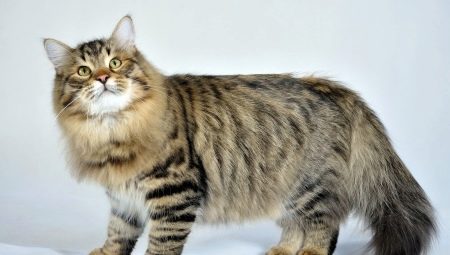
Cats are probably the most popular pets. These agile, proud, independent predators have long been renowned for their beauty and unique abilities. Some protect the house and food supplies from rodents, others heal ailments and save from stress. And also cats are credited with many other curious qualities, including mystical ones.
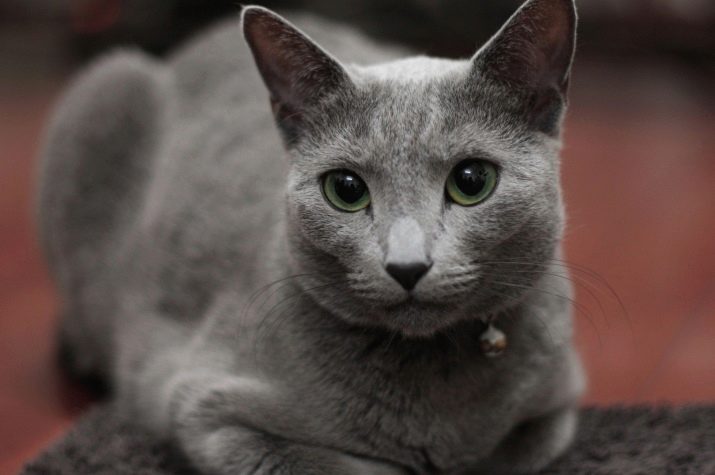
Varieties
Foreign breeding cats are popular and famous all over the world. But little is known about Russian breeds. The whole point is that in our country the selection of cat breeds is relatively recent. Each breed has its own history. Russian breeds are in no way inferior to foreign ones in beauty, abilities and character traits, and in some ways even superior. It is worth getting to know some breeds better, considering the nuances of selection, maintenance and proper care for them.
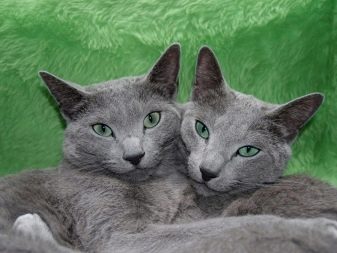

Russian blue
This breed is originally from the Arkhangelsk region. It has become widespread throughout the world. It is believed that this was facilitated by English and Russian sailors who visited the port of Arkhangelsk. This breed is prized for its hunting qualities and luxurious gray fur with a blue tint. The cat has rare emerald eyes.
These cats are very active at night. The Russian blue is considered a rat and mouse exterminator. If you have pets such as rats, mice, or birds in your home, precautions should be taken. The cat gets along well with other pets. She has a balanced companionable character and self-sufficiency, will keep you company, but will not let herself be squeezed. She does not release her claws so as not to scratch the owner or his children. The cat always demonstrates its affection to the owner, but behaves wary with the guests.
Minimal maintenance required. It is the same as for ordinary cats: prevention of parasites, combing, alternation of the diet.
The Russian blue has an intolerance to the lactose contained in milk, so milk should be excluded from the diet.

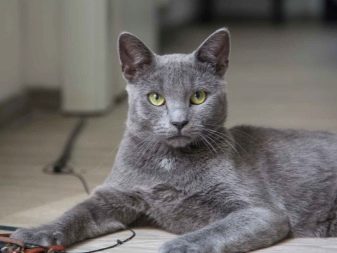
Russian black
The description of such a breed is rare. This is a short-haired cat with black hair. She is graceful and elegant. She has the external features of Russian blue: a general graceful body structure, short fur, eye color. However, the black cat is different in character.
The intellectual abilities of the cat are at their best... A self-sufficient cat is not very attached to the house, calmly tolerates moving, and is known for its stress resistance. She doesn't get along well with dogs. Does not require special care, dresidual hair care and prevention of parasites. By old age, diseases of the genitourinary system can develop.
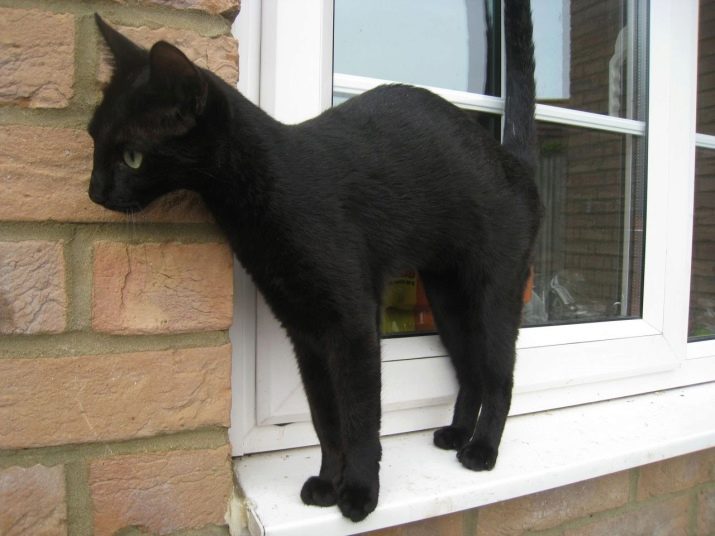
Russian white
This breed was bred from the Russian Blue in 1971 in Australia. She has short and dense fur, lithe body and green eyes. The cat has a shy character: he behaves wary with guests, tolerates loneliness well. She is calm about changing her place of residence.
Care is required for the coat. If the animal's health is not monitored, the fur may turn yellow. I need grooming. The cat is very intelligent and trainable. She will be a great companion and friend. The cat is playful, often takes part in children's games.
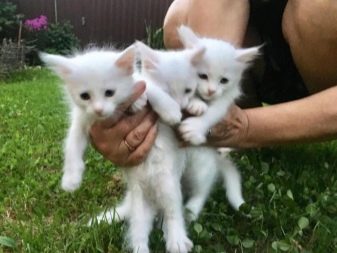
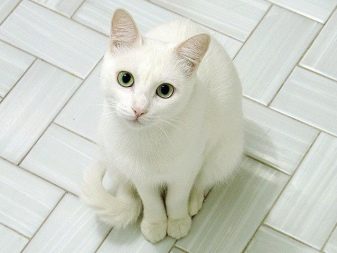
Siberian
These are large and beautiful animals. It is believed that the breed comes from Siberian forests, where they acquired such qualities as: a thick undercoat, which helps to withstand low temperatures, physical endurance and confident character. An adult can weigh more than 10 kilograms. The physique is okay, strong: muscular, proportional body, round head and powerful paws with large toes. She has large round eyes and large ears.
The coat is thick and fluffy - trequires daily combing and certain care... Animals are monochromatic and multi-colored. The color excludes white spots, lilac color, cinnamon and fawn.
Animals are distinguished by their gentle nature and lack of aggression. Cats are hypoallergenic and get along well with children.
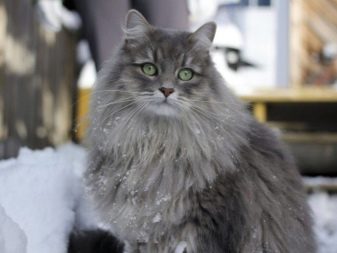
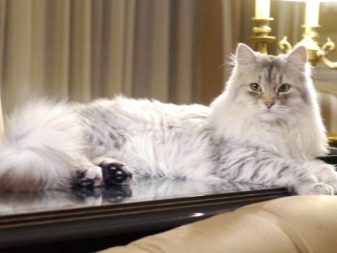
Neva Masquerade
This breed with an attractive color and blue eyes resembles the Siamese, but is a direct descendant of the Russian Siberian cat. She was called masquerade for the color of her face: one gets the impression that she is wearing a masquerade mask. It is called Nevskaya by its place of origin, since it was bred in St. Petersburg. The main features are the following:
- strong body with a wide chest;
- trapezoidal head shape;
- ears with tassels at the ends;
- rounded eyes.
Due to the fact that this breed is derived from the Russian Siberian, the cat is hypoallergenic. A total of 6 types of color are assumed. All representatives of this breed have an agreeable and positive character.
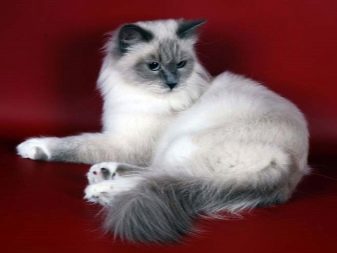

Ural rex
This is a unique Russian breed. Cats with curly hair were found in the Ural region, but during the war the population dropped to almost complete extinction. In 1988, in the Sverdlovsk region, a kitten with curly hair was born from an ordinary yard cat, which was named Vaska. Having crossed a cat with a mother, we got a breeding base for breeding this interesting breed.
These are medium sized cats. They weigh 4 kg, cats can weigh more than 6 kg. The body is short, strong, and muscular. The head is wedge-shaped, the forehead is wide, the chin is massive. The eyes are large, round, set wide apart.
The peculiarity of the breed is a curly, soft, pleasant to the touch wool. The curls of hair are spread all over the body - even on the tail. The color can be different. Cats have a gentle disposition.They are contact, affectionate and sociable, do not tolerate loneliness, subtly feel the mood of the owner, very attached to the person. Rexes are unpretentious in their content, they love houses. Such a beast will become a wonderful friend and companion, will not let you get bored.

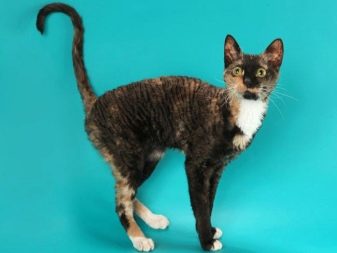
Peculiarities
It is believed that the basis of the breed is the Russian Siberian cat, bred in Russia. It combines several important qualities: a large fluffy animal with high-quality fur and a developed hunting instinct. Despite the careful work of felinologists, these animals still carry a bit of wildness. They have a wide variety of color options.
There is one more feature - a short pedigree. In the presence of certain characteristics, an ordinary cat can be attributed to the Siberian breed. This is sometimes used by unscrupulous breeders: they replace kittens, since buyers are mainly interested in appearance and price. In this case, an animal grows up, whose features and character bear little resemblance to the breed.
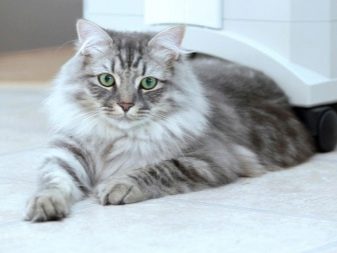
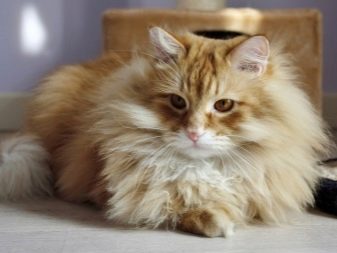
It is also noteworthy that in the line of Russian breeds there are all types of cats, namely:
- hairless - sphinxes;
- shorthaired - bobtails;
- semi-long-haired - Siberian, masquerade, blue;
- a breed with wool that resembles curled curls - the Ural Rex.

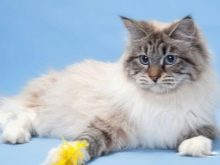
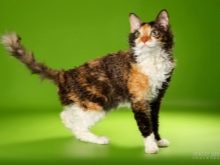
How to choose?
Before choosing a kitten, you should decide on the breed: which one you like, what will be the conditions of its maintenance, intrafamily nuances (whether there are children in the family and whether family members have allergies) and many other parameters. First you need to decide on the sex of the kitten. When the choice is made, you should decide where to get it: from breeders, in a nursery or in a shelter. It is worth noting that a pedigree kitten must have the following set of documents:
- pedigree;
- metrics;
- veterinary passport;
- contract of sale.
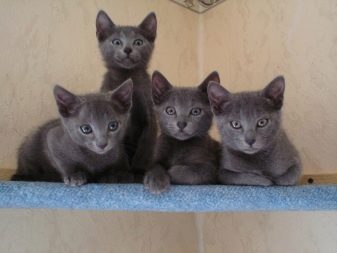
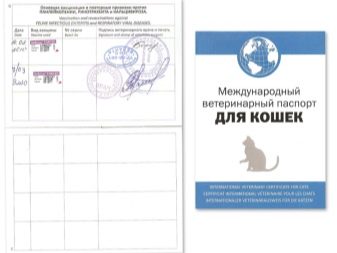
You should not immediately take the kitten from the mother-cat - you should not rush. Early weaning from the mother is a great stress for an immature organism with a fully immature immune system, which can cause illness and digestive disorders. At the age of one month, the kitten is only developing immunity. He also needs breast milk, which contains all the necessary vitamins and amino acids.
By the age of two months, the kitten adopts the basic skills from the mother: washing, eating independently, and developing a hunting instinct. The body becomes stronger and more developed. 3 months is the optimal age, because immunity is formed and the psyche has become stable, the kitten has adopted the necessary skills and is accustomed to the tray, the kitten normally contacts with people and with animals. At this age, the animal must undergo compulsory vaccination.
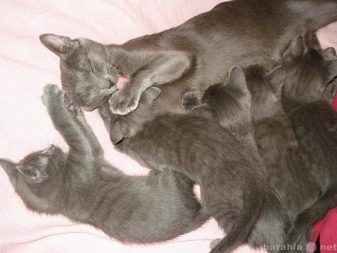
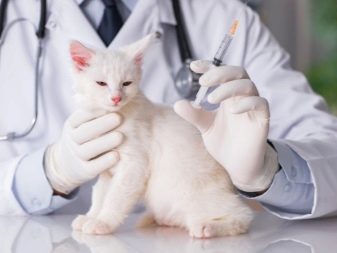
When the choice is made, you should pay attention to the state of the animal: a healthy kitten should be mobile and inquisitive. Try to play with it, there should be a reaction. Also check your reaction to sounds. White kittens require special attention: due to the peculiarities of the genes, there are representatives with complete or one-ear hearing loss. Pay attention to how the kitten moves: it should not roll over to its side, there should not be lameness, the tail should "stand like a pipe".
When examining, you should pay attention to the following nuances:
- the eyes should not water, fester and be inflamed;
- the nose should be cold, there should be no discharge from it;
- the mouth should be pink, any deviations indicate that not everything is in order;
- check for teeth in the mouth;
- ears should be clean and free of discharge and ear mites.
Important! Examine the fur of the animal: in the absence of diseases, it is shiny and silky, there are no bald spots on it, there are no sores on the skin. Check the paws of the animal: the condition of the pads and claws.
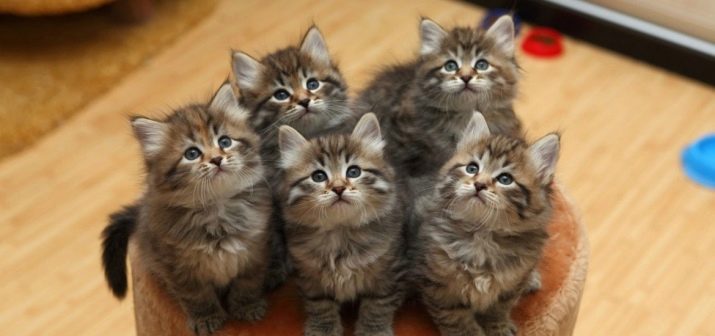
Content
The maintenance of Russian cats does not differ from proper care, but each breed has its own nuances.Some breeds require a predominance of certain nutrients in the diet, while others require flushing when looking after the eyes. Fluffy and semi-long-haired animals require attention to the coat: combing and periodic water treatments. Animal care is individual. It depends not only on the breed, but also on the following factors:
- age;
- sterilization / castration or lack thereof;
- past illnesses.
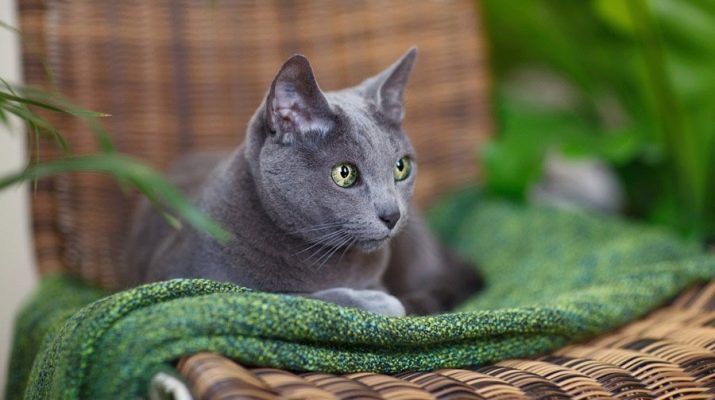
Nutrition
Food should be regular and balanced; you cannot feed the animal exclusively with dry food. Food should be nutritious and energetically valuable. The diet should have a lot of protein (found in meat and milk), 20% fat is allowed, and there should not be a lot of carbohydrates. The diet of spayed / neutered animals is different from that of ordinary cats and cats. So, it should contain minerals and vitamins previously selected by a veterinarian.
The diet should include the following components:
- meat - rich in amino acids and nutrients; do not eat fatty meat like pork;
- a fish - rich in phosphorus, calcium and protein;
- dairy products should be given with caution, as some breeds have lactose intolerance;
- will be useful cereal gruel mixed with vegetables, for the interest of the beast, it is worth mixing meat or fish.
Important! During pregnancy or lactation in cats, the diet should be treated more carefully - add vitamins, mix in the liver.
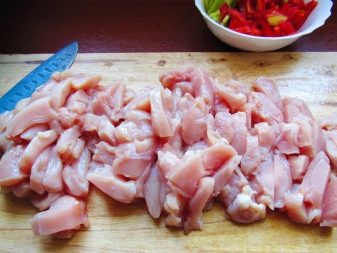

Hygiene
Cats are excellent at maintaining personal hygiene, but some breeds require separate grooming. Longer-haired cats require daily brushing and occasional watering. Ears require attention: they should be periodically examined and cleaned, ear drops should be instilled to prevent ticks and ear diseases. You should rinse your eyes with a moistened cotton pad in the morning.
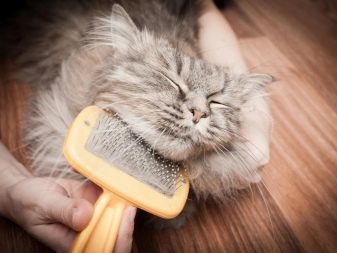
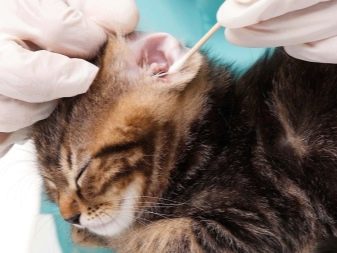
Diseases
Most of the diseases that an animal can be exposed to can be prevented by timely vaccinations and periodic veterinary examinations. Deworming should be carried out once a year. If the animal has access to the street, during the warm season it should be examined for ticks that can carry viruses. To prevent external parasites (ticks, fleas, lice), they are successfully used protective collars that should be changed periodically. Such a measure will completely protect the pet from many troubles. And also from parasites, special drops are used that drip onto the scruff of the neck.
The lifestyle of the animal must be monitored: so that it does not overcool, does not catch a cold and does not chill the kidneys. Diseases of the genitourinary system of an animal are very unpleasant, difficult to cure and often have irreversible consequences. From a walk, the animal can come wounded, scratched or injured. In this case, you should contact your veterinarian as soon as possible. If this is not possible, treat the wound according to the rules, prevent combing and licking.
All these precautions will reliably protect the family pet from a large number of common diseases and troubles.
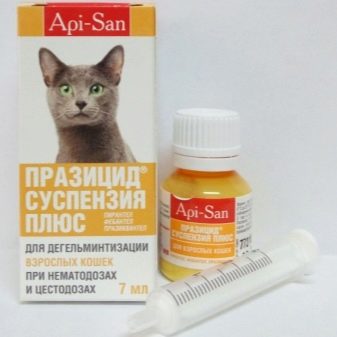
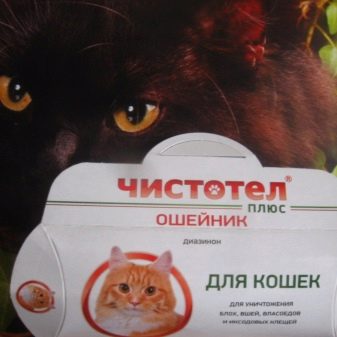
For the Russian blue cat, see the next video.






























